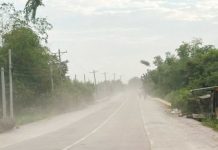
BACOLOD City – Experts and stakeholders have created an integrated plan to conserve and prevent the extinction of five key species endemic to Western Visayas.
“They’re all in serious trouble,” said Kristin Leus, program officer of the International Union for Conservation of Nature (IUCN) Conservation Planning Specialist Group.
According to Leus, critically endangered species in the region include Visayan Warty Pig, Negros Bleeding Heart Dove, Walden’s Hornbill, Tarictic Hornbill, and Visayan Spotted Deer.
Leus, who also works at the Copenhagen Zoo in Denmark, is the lead facilitator of the four-day Western Visayas Conservation Workshop hosted by the Talarak Foundation Inc. (TFI).
She was joined by Johanna Rode-Margono of the Chester Zoo in England, who chairs the IUCN Species Survival Group, Wild Pig Specialist Group.
“All of these species face similar problems. They also have similar organizations working for their conservation so it makes sense to plan for them together,” Leus said.
During the workshop, the participants determined the current status of the five species and formed a multi-species conservation strategy to preserve and protect them, including by integrating work in the field and in breeding centers.
The five species can be found in the two captive breeding centers of TFI at Negros Forest Park in this city and the other in Kabankalan City.
The foundation’s name, Talarak, is the local term for Walden’s Hornbill, also known as the Visayan Wrinkled Hornbill, Rufous-Headed Hornbill or the Writhed-Billed Hornbill.
TFI president Fernando “Dino” Gutierrez said the rapid decline in the numbers of these species is caused by hunting for sport, poaching for the illegal wildlife trade, and the lack of mature nesting trees in the forests.
“We’re trying to unify all our efforts to protect existing and remaining habitats and also collaborate and unite ex situ (off-site conservation) captive breeding populations within Negros and Panay. We will come up with one plan to preserve and protect these five species,” he said.
Gutierrez noted that they have identified certain areas where these species can be found, but since “they are so rare, the odds are, you will not be able to see them.”
“None of the species, except for the Visayan Tarictic Hornbill, you will have the chance to see in the wilds. We don’t even have photographic evidence,” he added. (With a report from PNA/PN)






